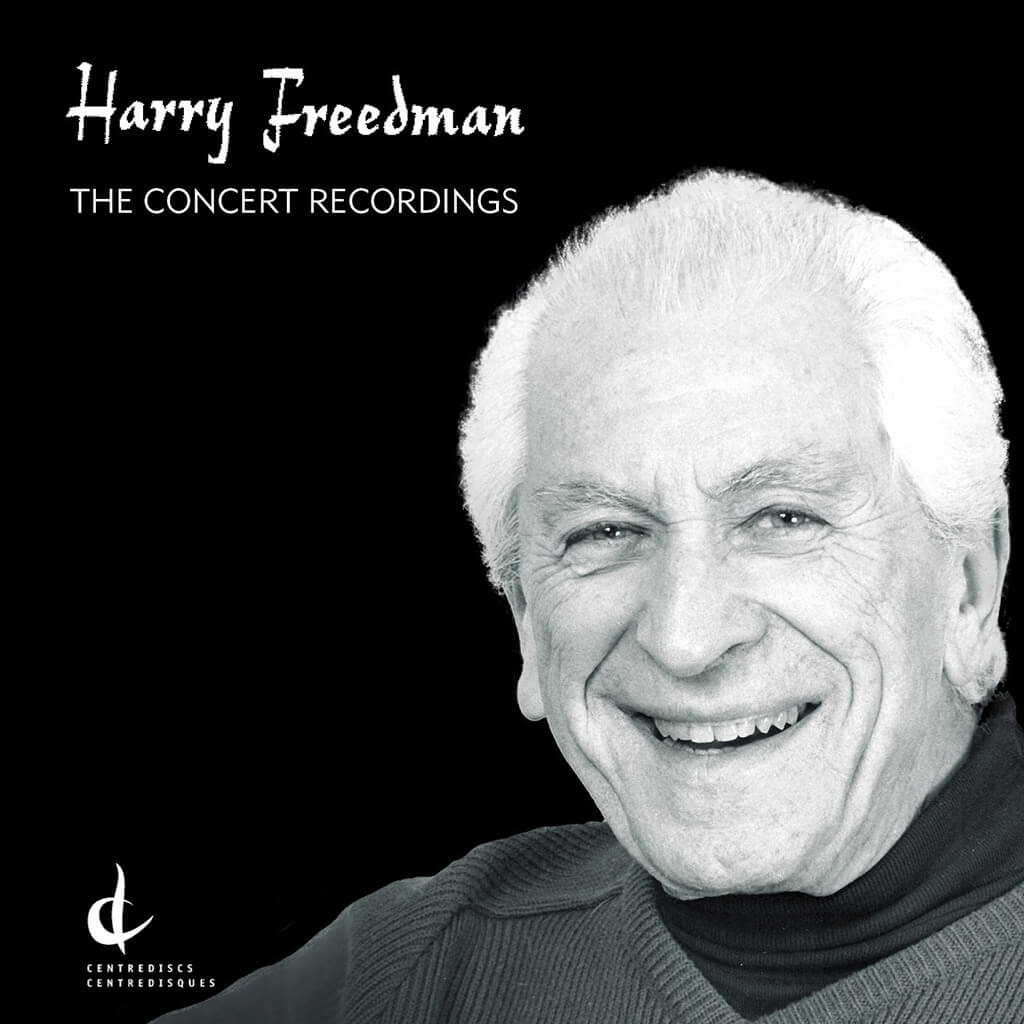
Harry Freedman (1922-2005) played English horn in the Toronto Symphony Orchestra (TSO) for nearly 25 years. That was a pretty good apprenticeship for a young composer, and Freedman made the most of it. This new CD brings together five of his major orchestral works, covering a period between 1960 and 2003. For listeners too young to have known Harry Freedman when he was one of the leading living Canadian composers and a formidable presence on the Toronto music scene, this album offers an excellent opportunity to become acquainted with his work.
The oldest piece in this collection is Images (1960), a three-movement work inspired by the paintings of Lawren Harris, Kuzuo Nakamura, and Jean-Paul Riopelle, respectively. The ‘Harris’ movement opens with a tremendous percussion crescendo culminating in a searing brass chord — a magnificent opening that took me back to the splendid Harris show at the Art Gallery of Ontario (AGO) last summer.
Freedman certainly captures the grandeur of Harris’ vision. The ‘Nakamura’ movement, “Structure at Dusk”, is a delightful scherzo with lots of lively scurrying around in the winds. Images ends with the ‘Riopelle’ movement, angry music with powerful hammer blows in the last bars to round it all off.
Although the ending is perhaps more unfriendly than it needs to be, Images is a major piece in Freedman’s output, and this performance by Andrew Davis and the TSO, recorded in Massey Hall in 1979, is magnificent. One quibble: I would like to have seen photos of the paintings by the featured artists in the Centrediscs booklet.
Two of the works on the CD — Indigo and Graphic IX — are for string orchestra. Indigo makes use of what the composer calls “blues clichés”, a good example of how Freedman often used jazz idioms in his music. There are some extended double bass pizzicato riffs in the piece that are clearly jazz-inspired as well as some jazz elements that are integrated with the classical idiom to the point where they almost undetectable. Unfortunately, as often happens when composers try to combine jazz and classical elements, the classical episodes, especially those involving violins in their highest register, tend to come off as “square”.
Freedman composed Graphic IX, one of two pieces on the CD inspired by his colleague, friend and neighbor Harry Somers (1925-1999), as a tribute to Somers, who had died a year earlier. But Graphic IX is by no means a lament; it is not a “sad” piece in any sense of the term. Rather, it is a gift “in kind”, if you will — intricately textured music that his friend would have appreciated.
Manipulating Mario, the second Somers-inspired piece, is described by conductor Alex Pauk as “a symphonic synthesis” of Harry Somers’ opera, Mario and the Magician. One would like to know more; for example, how much of Manipulating Mario is Somers and how much is Freedman? Freedman was 81 years old at the time. How much had his compositional style changed by this time. The music is predominantly diatonic and lyrical, with a quizzical (sarcastic?) march at the end. Is this the operatic Somers or Freedman’s take on the operatic Somers? The notes do not enlighten us.
Somers’ Mario and the Magician is based on a novella by Thomas Mann, which dates from 1929. The story concerns a magician representing Mussolini and his ability to mesmerize and corrupt. At the end of the novella, this magician is shot dead by a waiter who cannot stand the manipulation anymore. The narrative presents a very bleak view of human nature at its worst. No doubt both ‘Harrys’ (Somers and Freedman) would be appalled and fearful about political events in our own time.
In terms of the number of performers involved, the most ambitious piece on the CD is Borealis, a work commissioned by the CBC for the 1997 Soundstreams Northern Encounters Festival of the Arts. This recording was made at the first performance of the piece given in the Barbara Frum Atrium of the Canadian Broadcasting Centre in downtown Toronto.
Freedman obviously welcomed the opportunity to station his four choirs in various locations around the Atrium to produce Gabrieli-like antiphonal effects, as there are several thrilling call and response episodes of this type between choirs and orchestra in Borealis. The composition’s title comes from Aurora Borealis, i.e., the “Northern Lights” and the piece is generally about the wonders and mysteries of the Canadian north. Some of the drumming seems inspired by aboriginal sources and Freedman described the text as “a sort of abstraction of various aboriginal languages”. Make no mistake, however; while this is genuine Canadiana, it has a much wider appeal, not only because of its beauty, but also because of its power. Borealis receives a fine performance by both choirs and instrumental forces, as conductor Jukka-Pekka Saraste elicits the best from all them.
For more RECORD KEEPING, see HERE.
#LUDWIGVAN
- SCRUTINY | TSO Lets Berlioz Do The Talking In Season Opener - September 21, 2018
- RECORD KEEPING | Even Yannick Nézet-Séguin Can’t Make Us Love Mozart’s La Clemenza di Tito - September 6, 2018
- RECORD KEEPING | Giovanna d’Arco With Anna Netrebko Explains Why The Best Operas Survive - August 30, 2018



